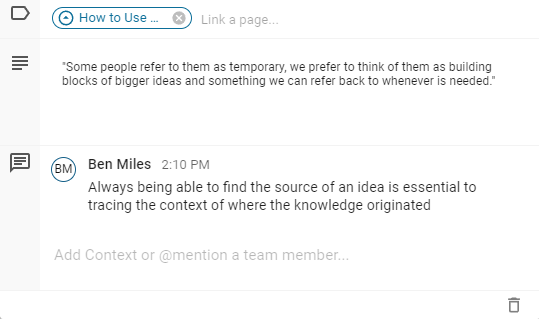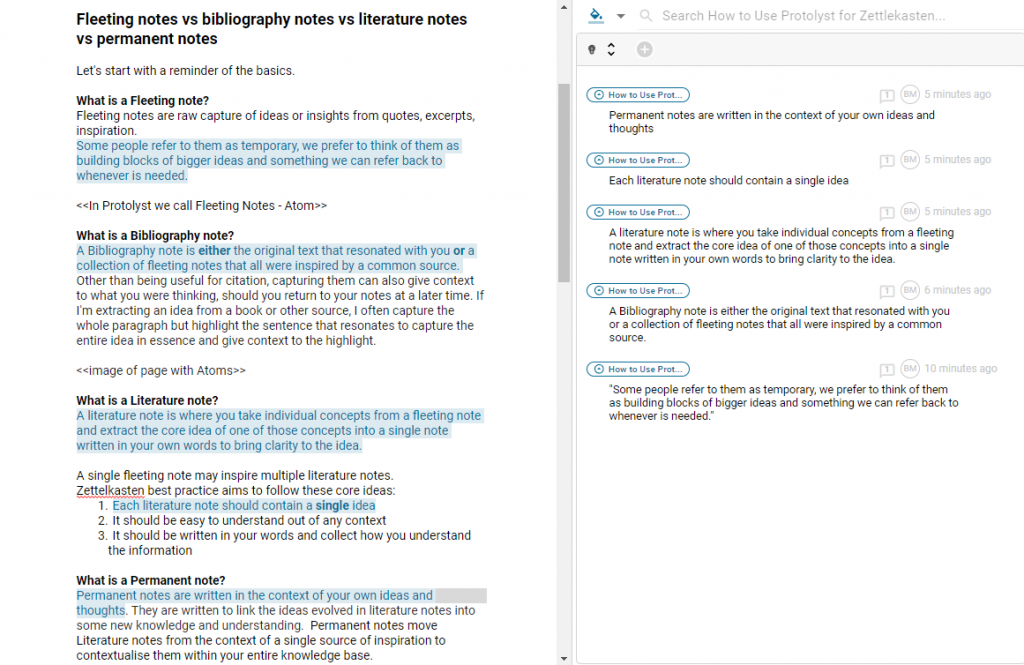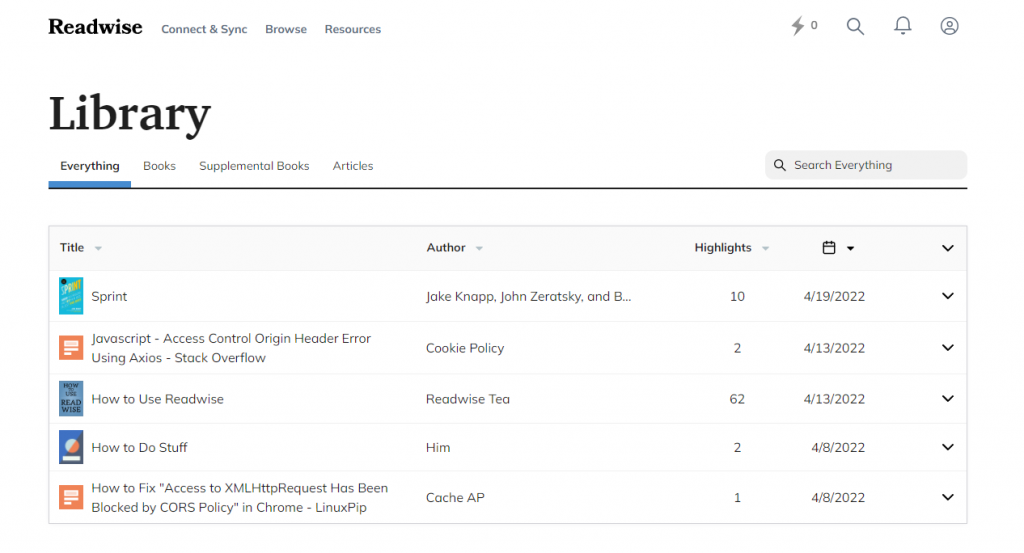How should you make effective fleeting and literature notes for your Zettelkasten method? Everyone’s approach is different, but here is a good starting point we find effective.

Whatever you are reading; books, articles, web-pages, or tweets, when you are applying the Zettelkasten note-taking methodology, your goal is to capture interesting ideas and learnings. But how should you best collect ideas for categorisation in order to create Atomic Knowledge?
Fleeting notes vs Bibliography notes vs Literature notes vs Permanent notes
Let’s start with a reminder of the basics of Nikas Luhmann’s slipbox system, aka Zettlekasten.
What is a Fleeting note?
Fleeting notes are raw capture of ideas or insights from quotes, excerpts, inspiration. Some people refer to them as “temporary”, we prefer to think of them as building blocks of bigger ideas and something we can refer back to whenever we might need.

Fleeting notes should always give context to the underlying source of inspiration and link back to the original work from which the idea originated.
What is a Bibliography note?
A Bibliography note (otherwise called a “Source note”) is either the original text that resonated with you or a collection of fleeting notes that all were inspired by a common source. Other than being useful for citation, capturing them can also give context to what you were thinking, should you return to your notes at a later time.
If I’m extracting an idea from a book or other source, I often capture the whole paragraph but highlight the sentence that resonates to capture the entire idea in essence and give context to the highlight.

What is a Literature note?
A literature note is where you take individual concepts from a fleeting note and extract the core idea of one of those concepts into a single note written in your own words to bring clarity to the idea.
A single fleeting note may inspire multiple literature notes. Zettelkasten best practice aims to follow these core ideas:
- Each literature note should contain a single idea
- It should be easy to understand out of any context
- It should be written in your words and collect how you understand the information

What is a Permanent note?
Permanent notes are written in the context of your own ideas and thoughts. They are written to link the ideas evolved in literature notes into some new knowledge and understanding. Permanent notes move Literature notes from the context of a single source of inspiration to contextualise them within your entire knowledge base.

How To Use the Zettelkasten Method
When reading a book, article, or website, I create a new Bibliography note to capture all of the highlights, thoughts, quotes, and annotations that I want to capture during reading; these individual ideas become my Fleeting notes by highlighting and clicking “CAPTURE”. Platforms like Readwise and Kindle are also excellent for capturing and collating this information.

After capturing Fleeting notes, it’s important to process them into Literature notes, either once a day, or after each article or book, or whenever works for you, but I’d recommend following a routine to make this process a habit.

When you have completed your Literature notes, you can go through each one to consider making it a Permanent note. Decide based on these factors:
- Is it a new idea to you?
- Does it change your understand of a topic or idea?
- Is it connected to other ideas in your knowledge space?
Congratulations! You know have a Permanent note a processed and evidenced starting point for creation of new ideas and ready to be linked to other aspects of your knowledge base.
The Importance of Keeping Track of Sources
Fleeting notes, literature notes, and Permanent notes may all contain references to source material. It’s important to keep these links alive so that you can revisit the source material to confirm your understanding or add context that may be missing. This will help if you ever find information in the future that contradicts a Permanent note, allowing you to interrogate the original information.

Atomic Notes And How To Use Them - Protolyst
[…] Zettlekasten on Protolyst […]